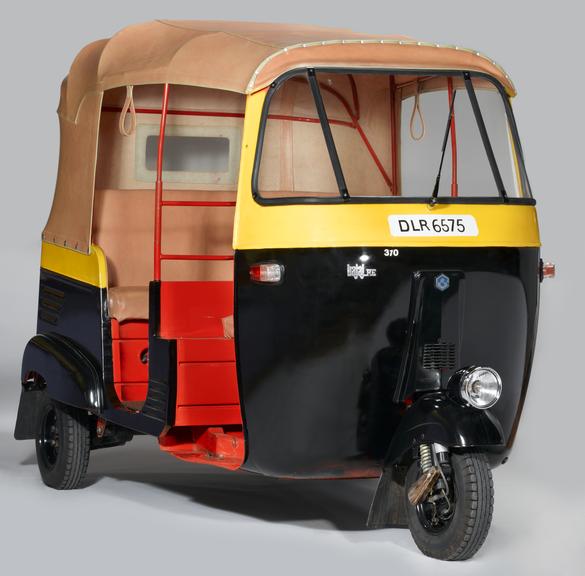
'Bajaj Autoriksha' Model Type 24, Autorickshaw
- Materials:
- painted metal , glass , plastic and textile and polyvinyl chloride (PVC)
- Object Number:
- 1982-1362/1
- type:
- taxicabs



'Bajaj Autoriksha' model type 24, autorickshaw made by Bajaj Auto Ltd., India in 1982. Exhibited at the Science Museum as part of the Festival of India in 1982, DLR 6575. The word rickshaw originates from Japanese literally meaning ‘human-powered vehicle’ and first came to India in around 1880. They were initially used by Chinese traders to transport goods, and it wasn’t until 1914 that permission was granted to use them to transport passengers. This modern rickshaw is powered by an engine, so called an Autoriksha, and made by the Bajaj Group, one of the most successful businesses in India making automobiles, home appliances, lighting, iron and steel, insurance, travel and finance.


